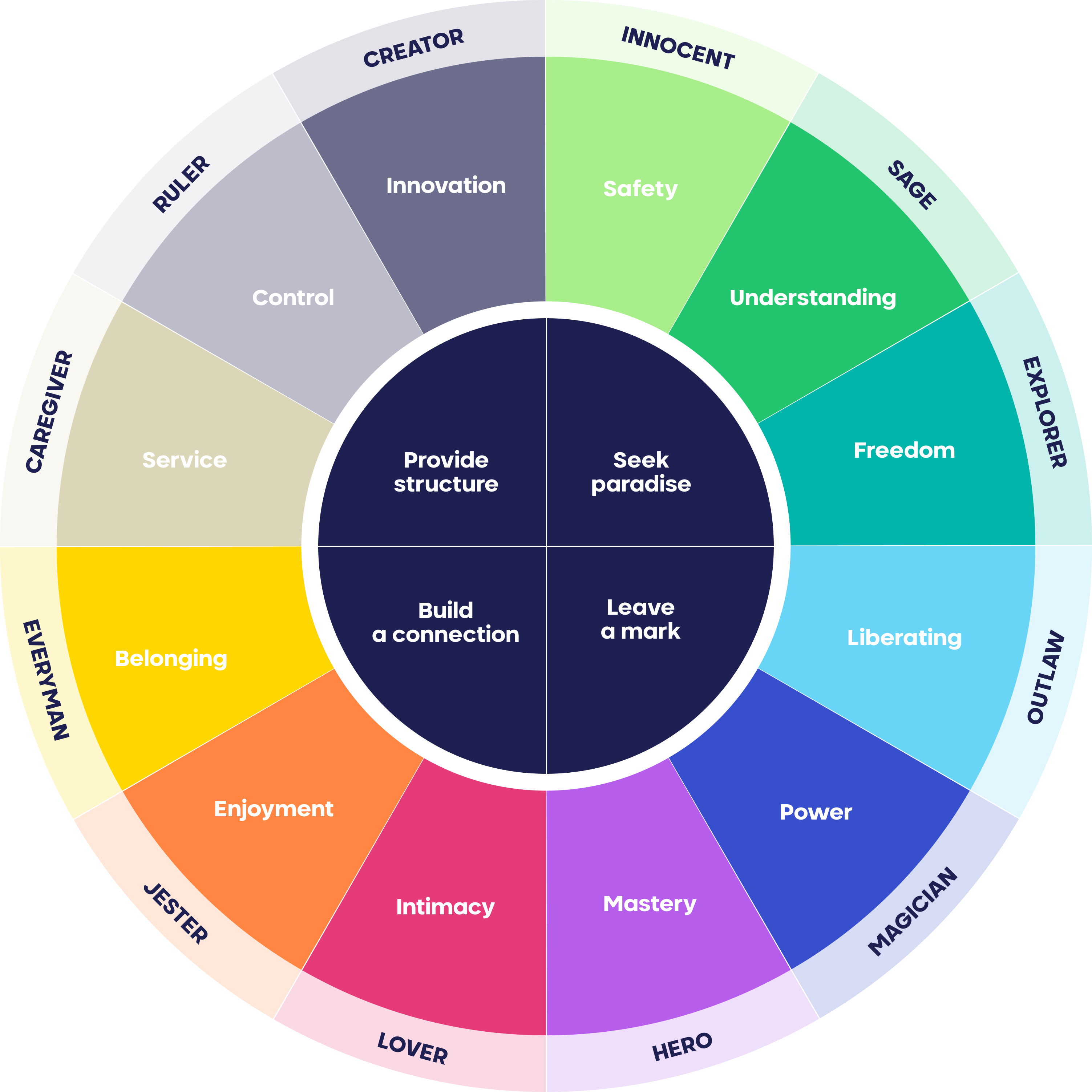Tips and tricks to put your brand archetype to good use!
Great, you have determined your brand archetype! You are one step closer to creating a consistent brand story that captivates your audience and deepens their emotional connection with your brand. Now what? How do you go about effectively using a brand archetype to power your business?
We have compiled a couple of tips & tricks to get you started!


 Conversely, while your company might be naturally inclined towards the Caregiver archetype because you provide services that comfort or nurture, that doesn’t mean you need to steer clear of the more bold characters like the Ruler. They are, after all, neighbors on the brand archetype wheel so they possess similar qualities. In this case, they share the higher purpose of providing structure.
Conversely, while your company might be naturally inclined towards the Caregiver archetype because you provide services that comfort or nurture, that doesn’t mean you need to steer clear of the more bold characters like the Ruler. They are, after all, neighbors on the brand archetype wheel so they possess similar qualities. In this case, they share the higher purpose of providing structure.



